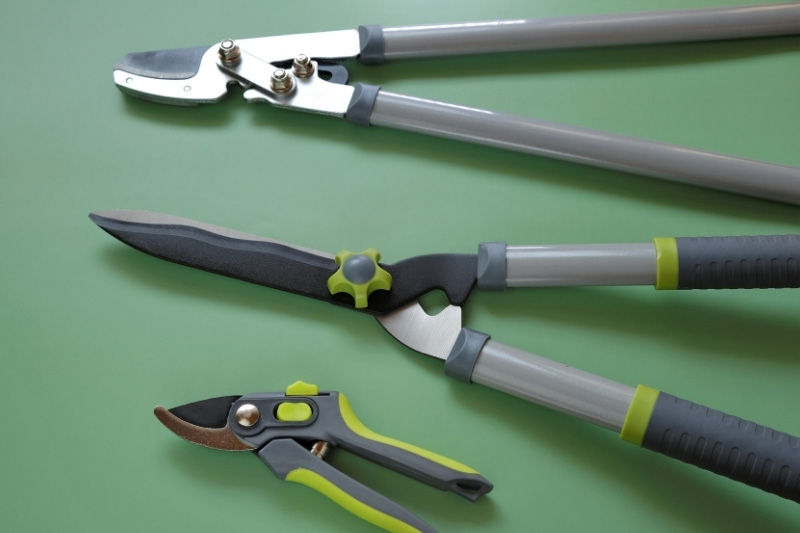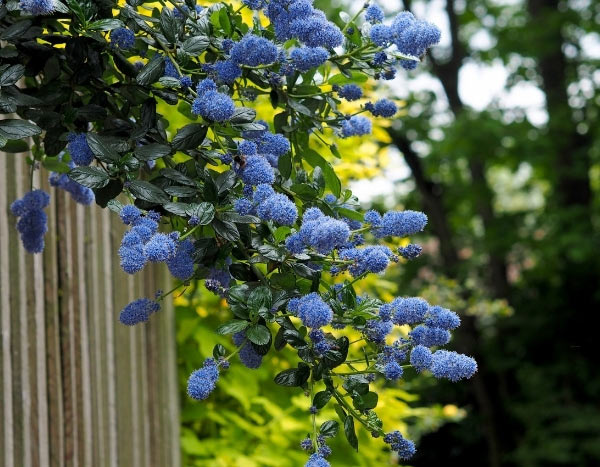When to prune Ceanothus?
- Evergreen Ceanothus should be pruned after flowering (like Ceanothus 'Skylark', thyrsiflorus repens or Ceanothus arboreus 'Trewithen Blue' for example)
- Deciduous Ceanothus should be pruned in March (Ceanothus delilianus 'Gloire de Versailles' or Ceanothus pallidus for example) but during summer, don't hesitate to remove spent flowers from summer varieties to encourage a second flowering in autumn.
- Every 3 to 4 years or if cold has damaged your Ceanothus, carry out a shorter pruning by cutting back branches more severely by 1/3 to remove dead wood and maintain a compact habit for your bush. This pruning should be done early April and your bush will not flower the year of pruning.
Why prune Ceanothus?
Pruning California Lilac helps maintain a nice dense and bushy habit. Indeed, this vigorous shrub has rapid growth and branches can sometimes stretch to the detriment of the overall shape. Pruning will allow the plant to branch out. It also serves to remove spent flowers, especially for pruning evergreen Ceanothus at the end of flowering.
Pruning also allows cutting back aging specimens that may have developed an unbalanced habit and accumulated dead wood.
How to prune Ceanothus?
Necessary equipment
To prune your California Lilac, equip yourself with
- hedge shears,
- a secateurs
- and/or a lopper for more severe pruning involving cutting larger branch sections.
Secateurs and loppers will be more effective on older and shrubby specimens with robust branches, while well-sharpened shears will allow quicker pruning of countless spent branches and reshaping shrubs planted in hedges.
For specimens planted in trimmed hedges, pruning can be done carefully with an electric or petrol hedge trimmer with well-sharpened blades. This latter method not being the best for clean cuts, it should be reserved for long hedge lines.

Lopper, hedge shears and well-sharpened secateurs: the tools needed for manual pruning of Ceanothus
Maintenance pruning: to maintain a beautiful shape
It helps maintain a dense habit and promote abundant flowering for your Ceanothus. Very light pruning is enough to rid the shrub of its spent flower heads.
- With shears or secateurs, prune the ends of branches by rounding the shrub's shape and reducing its volume if needed. Respect its natural shape, except for hedge shrubs and specific forms (ball shape on stem for example)
- Remove also dead wood, as well as branches that unbalance the shape
- For Ceanothus in trimmed hedges, follow the hedge line while regularly stepping back. Prune on both sides keeping the hedge trimmer very vertical and the top keeping it very horizontal
- For trained Ceanothus, their woody branches will harden and form wood. Prune to maintain the desired shape and encourage vertical branch starts.

Adapt pruning to your Ceanothus' shape: trained against a wall, as a natural habit shrub, ball-shaped or in a hedge
Pruning an aging specimen: for a new lease of life
Cutting back may be necessary on an aging, unbalanced, damaged Ceanothus or one taking up too much space. This pruning then involves removing all old branches, as well as dead or damaged branches especially for evergreen Ceanothus which cannot regrow from old wood.
Deciduous species being able to produce new branches from the stump, their pruning can be more severe and you can remove more than half of the oldest branches at the base if needed. This pruning is done in late winter before vegetation restarts and after risks of intense cold.
A few precautions to finish
- Remember to always clean with soapy water then disinfect with alcohol your pruning tools before and after use to avoid transmitting diseases from one specimen to another. Sharpen, dry and grease them after cleaning to prevent rust and seizing: your tools will stay like new for years
To go further:
- Discover our many varieties of Ceanothus
- Learn everything you need to know about California Lilac in our complete guide: "Ceanothus, California Lilac: planting, care, pruning"




































